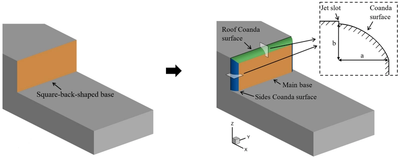New Design Reduces Aerodynamic Drag of Ship Superstructure
A research team at Chalmers University of Technology, Sweden, has demonstrated a unique method that can reduce the aerodynamic resistance of ships by 7.5%.
Central to the method is the steady flow Coanda effect - the tendency of a fluid to flow – like water down the back of a spoon – along a convex surface instead of launching away from it.
In shipping, one of the main sources of aerodynamic drag is the square-shaped back of the ship’s superstructure, and the new method developed by the Chalmers researchers induces the Coanda effect around this area.
“By creating a design with convex edges on the ship’s superstructure and allowing highly compressed air to flow through jet slots, the Coanda effect allows air pressure on the ship’s hull to balance out. This, in turn, reduces aerodynamic drag considerably, making the ship more energy-efficient,” says Kewei Xu, postdoc researcher at Chalmers.
Inspired by aerodynamic technology used in aviation, the method is considered particularly relevant to future wind-powered shipping. Previously, aerodynamic effects were not deemed important compared to a ship’s resistance in water.
The researchers claim it opens the way for large cargo ships borne propelled by sail, as wind-powered ships are more affected by aerodynamic drag than engine-powered ones.
The technology could also enable safer helicopter take-offs and landings on ships. Turbulence usually arises as air flows down from the ship’s superstructure, destabilizing the helicopter. Since pilots need to land or take off on a very precise location on the ship, this comes with major risks. Currently, fences or an adapted shape on the ship are used to minimize risks, but they are not very effective, says the Chalmers researchers. The new method dampens the turbulence, as it affects the wind flowing down behind the superstructure.
The Coanda effect is named after Romanian inventor Henri Coanda who, around 1910, was the first to recognize the practical applications of the phenomenon in aircraft design. Today, the effect is used in jet aircraft, where aerodynamic lift is increased as the jet stream “sticks” to the wing. The Coanda effect affects air and liquid flows in many different contexts, such as air conditioning.
The method, which can be used on existing as well as newly-designed ships, is described in a paper published in Physics of Fluids.

















